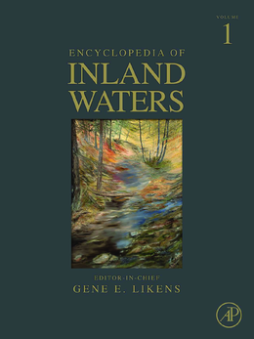
Additional Information
Book Details
Abstract
Inland aquatic habitats occur world-wide at all scales from marshes, swamps and temporary puddles, to ponds, lakes and inland seas; from streams and creeks to rolling rivers. Vital for biological diversity, ecosystem function and as resources for human life, commerce and leisure, inland waters are a vital component of life on Earth. The Encyclopedia of Inland Waters describes and explains all the basic features of the subject, from water chemistry and physics, to the biology of aquatic creatures and the complex function and balance of aquatic ecosystems of varying size and complexity.
Used and abused as an essential resource, it is vital that we understand and manage them as much as we appreciate and enjoy them. This extraordinary reference brings together the very best research to provide the basic and advanced information necessary for scientists to understand these ecosystems – and for water resource managers and consultants to manage and protect them for future generations.
- Encyclopedic reference to Limnology - a key core subject in ecology taught as a specialist course in universities Over 240 topic related articles cover the field
- Gene Likens is a renowned limnologist and conservationist, Emeritus Director of the Institute of Ecosystems
- Research, elected member of the American Philosophical Society and recipient of the 2001 National Medal of Science
- Subject Section Editors and authors include the very best research workers in the field
"Editor-in-chief Likens is eminently well qualified to lead a stellar group of some 340 scientists and expert contributors. Likens dedicates this work to his colleague, the late Robert Wetzel. For students, the names of Wetzel and Likens together are synonymous with limnology (Limnological Analyses, 3rd ed., 2000), and this encyclopedia is a worthy testament to their stature in the discipline. The scope of this set is vast ...Articles are scholarly and carefully edited for clarity, with generous cross-referencing. ...Colored photographs, excellent drawings, maps, tables, charts, and graphs are thoughtfully used to illustrate complex concepts and data ...Given the extraordinary demands on freshwater worldwide, this work fills an important need by supplying accurate information to students, researchers, and policy makers. Summing Up: Essential. Lower-level undergraduates through professionals/practitioners." --A. S. Ricker, Oberlin College, CHOICE, November 2009
